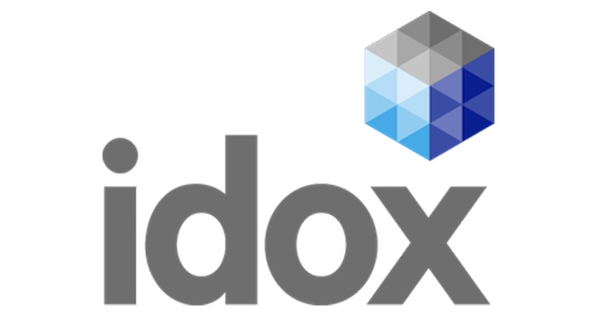Welcome to Idox Spotlight on…
Top tips for local authority procurement success
Councils need transformative digital solutions to deliver vital services, but budgetary constraints loom large while legacy systems creak under the pressure. Here’s the good news: navigating the complex procurement landscape is possible, and the rewards are substantial.
For over 30 years, Idox has been collaborating closely with local authorities, accumulating a vast wealth of experience and expertise in procurement processes. Stephanie, Senior Bid Manager at Idox, with her seasoned insight, delves into the procurement landscape, offering valuable top tips for best practice.
Stage one: Investing time into pre-procurement
By taking a step back and investing time in pre-procurement, local authorities not only gain a clear picture of their needs but also pave the way for a more effective procurement process and the selection of a solution that drives positive change for your Council and the public it serves.
Understanding your needs:
This stage is all about clarity. It’s crucial to take the time to deeply understand your solution requirements and the associated impact on internal processes. Legacy systems are often supported by manual workflows, many of which will simply not be required when moving to the cloud, for example. As such, a new solution needs a fresh perspective and some introspection. Consider, for example, what is driving the change? How do current processes need to be streamlined? How will day-to-day staff roles change as a result? Our experience has shown that by clearly identifying areas for transformation, that incorporate both tools and processes, will ensure your new solution will truly align with every need.
Embrace transformation, not replication:
Any change can be daunting, but it’s a necessary part of procurement success. With the number of stakeholders and departments involved, internal conflict around change is a natural hurdle, but securing buy-in across all stakeholders is crucial. Open communication and a focus on the long-term benefits for all are key to gaining support.
Soft market testing: a win-win strategy:
Don’t rush into the formal procurement process without all the facts. Soft market testing allows you to gauge potential costs and shape your formal procurement based on what the market offers. By investing time into this part of the process you can bolster your formal procurement with current, relevant knowledge to secure the best possible solutions at the best value.
By taking a step back and investing time in pre-procurement, local authorities not only gain a clear picture of their needs but also pave the way for a more effective procurement process.
Social values:
Acquiring the best product or service at the lowest price is no longer enough. Councils are looking to build long-term partnerships with suppliers who share their values. So, by factoring in Corporate Social Responsibility (CSR) and Environmental, Social, and Governance (ESG) factors, you can build a stronger, more sustainable future for your Council alongside the right supplier.
What does that mean in practice? Take time to consider your values, the weight you give them in the bid, and what is most important for the supplier to be doing from a CSR perspective:
- Environmentally conscious: does the supplier have a plan for reducing its environmental impact to align with your Council’s commitment to a sustainable future?
- Community champions: does the supplier give back through charitable activities or support local initiatives?
- Socially supportive: social aspects like volunteering, work placements, and promoting STEM education demonstrate a supplier’s commitment to the community and workforce inclusivity.
As the ESG and CSR focus across public and private sectors continues to evolve, these elements are no longer a checklist exercise. By prioritising these values, you’ll attract suppliers who share your vision for the future.
Finding the right procurement framework:
The pre-procurement stage also involves establishing the right procurement framework for your needs; what are the benefits of each and what will be the best tool for the job to attract the most qualified suppliers? For example; using a framework such as those offered by CCS (G-Cloud 13, VAS, DOS and DSP) will simplify the procurement process by providing a shortlist of fully vetted suppliers across every software vertical.
Stage two: During the procurement
Fair and open communication
Clear and open communication throughout the procurement process is vital. Prioritise being concise and informative to ensure all parties are on the same page from the start. This guarantees a level playing field for all suppliers and eliminates any potential for bias. Remember not to reuse old documentation. Every procurement is unique, so refine your documents accordingly.
Prompt clarification
Clarification windows offer a golden opportunity for suppliers to ask questions about documentation, drivers, pricing, legal elements and more – all of which can materially change the content of bids. With prompt, open communication, suppliers can get all the information they need to ensure an accurate and relevant response.
Prepare your tender documents
When it comes to drafting your tender documents always remember, your team will need to evaluate the eventual responses in a fair and objective way. Failure to do so can result in failed procurement or even legal challenges. A great tender pack consists of clear instructions, focused requirements, appropriate response formats and realistic word counts that are appropriate to your question or method statement. This will enable suppliers to deliver a response that you can score quickly and objectively.
Carefully consider your evaluation and award criteria and focus your weighting on the elements that are most important to you to ensure you don’t lock into a cheap solution that doesn’t quite meet your requirements or vice versa.
Review and double-check
All documentation must be reviewed thoroughly to ensure no ambiguity and a smooth process for all. Consider having someone outside of your immediate team to review your documentation. Their outside perspective could spot conflicting, ambiguous or missing information.
Stick to timelines
Create a clear and realistic procurement process timeline for both suppliers and your team. Response timelines should be appropriate to the size and value of your tender to improve the quality and number of responses you receive. Consider extending timelines around holiday periods to avoid vendors pulling out of the process or your team rushing the evaluation. Plan ahead and ensure everything is in place for delivery within the dates specified. Remember, agile cloud-based solutions evolve quickly, so factor in some flexibility if needed.
Stage three: Post-procurement
Mitigate risks
With a realistic timeline in place and ensuring contracts are signed within the proposed timelines both your team and the chosen supplier can mobilise their resources efficiently to get the project started as planned. This feeds back to the pre-procurement stage – ensuring everyone is on board with the project goals and timelines is crucial. Sticking to the established process from pre-procurement all the way through is key to a smooth project launch.
Plan for the unexpected
It’s not unusual for projects to hit roadblocks, so be prepared with delivery contingency plans in place to navigate unforeseen challenges. This could be anything from another project demanding resources to staff changes that impact delivery. By anticipating potential issues, you can minimise disruptions and keep the project on track.
Don’t forget to feedback
Providing specific feedback enables suppliers to shape their future responses and adapt implementation processes or product functionality to ensure greater robustness and streamlining. Local authorities regularly engage in procurement, so creating a cycle of continuous improvement benefits everyone. Supplier feedback can lead to better products, better services, and ultimately, more efficient procurement processes.
By providing constructive feedback to suppliers, you demonstrate a commitment to fair and unbiased procurement practices. This transparency shows the public that their council is dedicated to securing the best solutions for the community, further strengthening public confidence in local government.
By leveraging procurement best practices, councils ensure value for the public purse and secure future-proofed investments. Through strategic collaboration with the right technology partner, we can seamlessly pave the path for digital transformation, yielding benefits not only for you and your team but also for the citizens you serve.






